QUESTION 1 Arbitration and mediation are two nonadversarial
QUESTION 1
Arbitration and mediation are two non-adversarial alternatives to litigation.
True
False
5 points
QUESTION 2
If a person receives a summons and complaint, but fails to appear for hearings or trial, the court may still have jurisdiction over that person and could render a decision affecting his or her rights.
True
False
5 points
QUESTION 3
The least adversarial alternative to litigation is arbitration.
True
False
5 points
QUESTION 4
Trial courts are courts of original jurisdiction in most cases.
True
False
5 points
QUESTION 5
The attorney-client privilege is designed to encourage the client to tell the truth to his attorney.
True
False
5 points
QUESTION 6
One of the common criticisms of the adversary system is that it unfairly benefits the wealthier party.
True
False
5 points
QUESTION 7
Cases must initially be heard in courts of appellate jurisdiction.
True
False
5 points
QUESTION 8
Subject matter jurisdiction determines whether a case is heard in state or federal court.
True
False
5 points
QUESTION 9
A right of removal allows the defendant to move a case from the state court system in which it\'s filed to a federal court system.
True
False
5 points
QUESTION 10
Federal judges are appointed, while most state judges are elected.
True
False
5 points
QUESTION 11
Which of the following is not considered one of the threshold issues that must be met before one can bring a lawsuit?
standing.
ripeness.
case or controversy.
none of the above (all must be present).
5 points
QUESTION 12
A case challenging a statute as violating a person\'s rights under the U. S. Constitution
must be heard in a State court.
must be heard in a federal court.
may be heard in either State or federal court.
must be heard in the U. S. Court of Claims.
5 points
QUESTION 13
To render a binding decision in a case, a court must have
subject matter jurisdiction.
jurisdiction over the person.
either a or b.
both a and b.
5 points
QUESTION 14
Standing
requires proof of an injury in fact and of an interest that is directly affected by the challenged action.
is usually not difficult to establish when challenging the action of an agency under an environmental statute.
both a and b.
none of the above.
5 points
QUESTION 15
The federal district court and the court of common pleas have concurrent jurisdiction over
cases involving the interpretation of the Constitution.
most cases requiring the interpretation of a federal statute.
both a and b.
none of the above.
5 points
QUESTION 16
Federal judges
are appointed by the president with the advice and consent of the Senate.
are allowed to serve for life, assuming \"good behavior.\"
are elected.
both a and b.
5 points
QUESTION 17
The purpose of serving the summons and complaint is to
give the defendant notice of the pending action against her.
give the court jurisdiction over the defendant.
give the court subject matter jurisdiction over the case.
both a and b.
5 points
QUESTION 18
The voir dire process
is supposed to ensure that jurors are not biased.
allows for removal of potential jurors through both peremptory and for cause challenges.
both a and b.
none of the above.
5 points
QUESTION 19
If a defendant wants to sue a plaintiff, then the defendant should also file a(n) _____ with the answer.
counterclaim.
information.
either a or b.
none of the above. He must wait until the plaintiff\'s case has been decided.
5 points
QUESTION 20
Grand juries
are used in only criminal cases.
are used in only civil cases.
are used to decide the facts in a case.
both a and c.
| A. | standing. | |
| B. | ripeness. | |
| C. | case or controversy. | |
| D. | none of the above (all must be present). |
Solution
1) \"True\"
Arbitration and mediation are two least nonadversarial alternatives to litigation which involves both the parties mutual consent to find a midway between them.
2) \"True\"
If the person has received a summon he is liable to reach the court himself or send his attorney, if he doesn\'t do so the court has all jurisdictions over him and can pass his decision.
3) \"False\"
The least adversarial measure is mediation. Arbitration follows after mediation.
4) \"True\"
Trial courts are the first i.e. original jurisdiction in most cases.
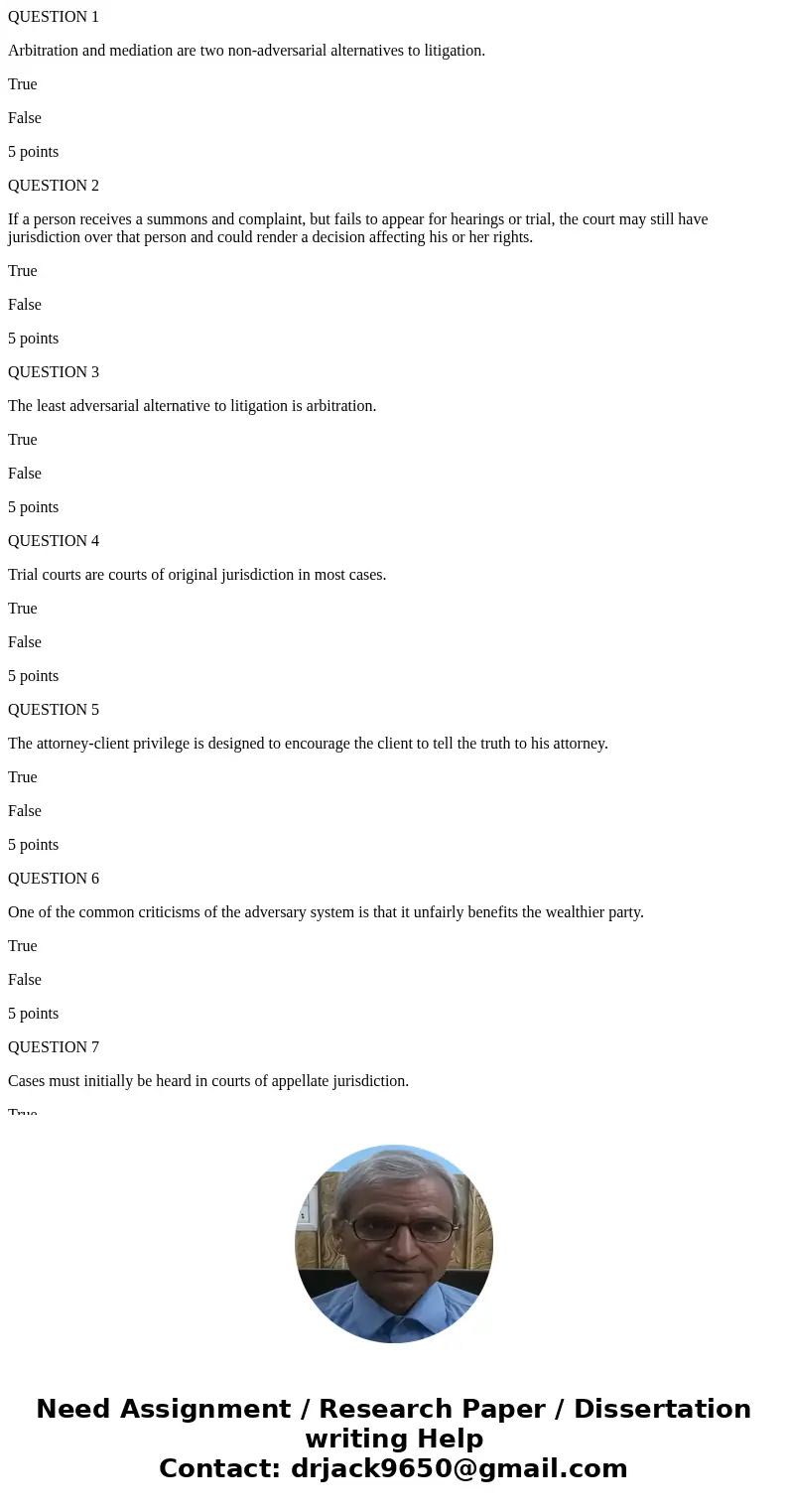
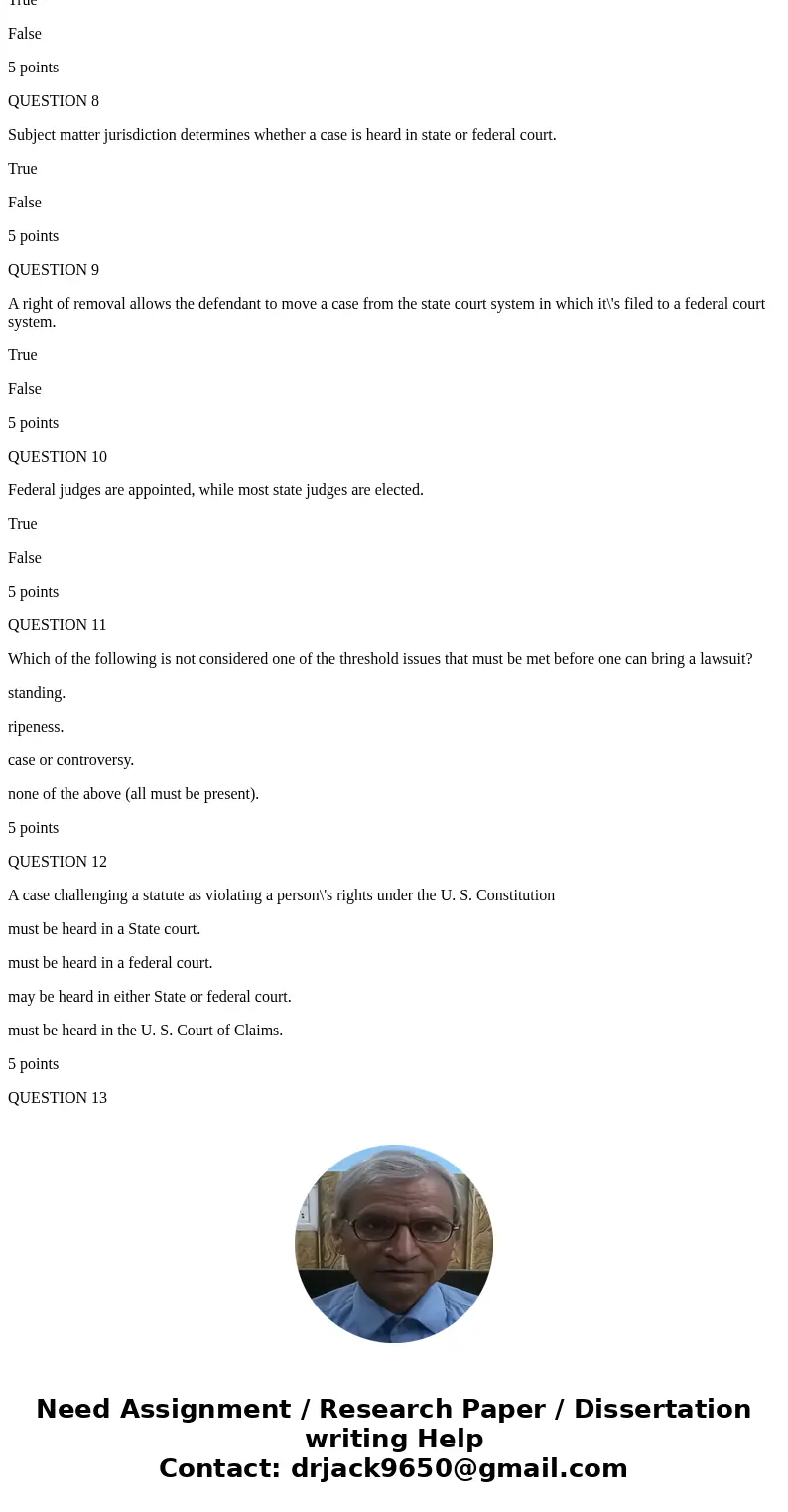
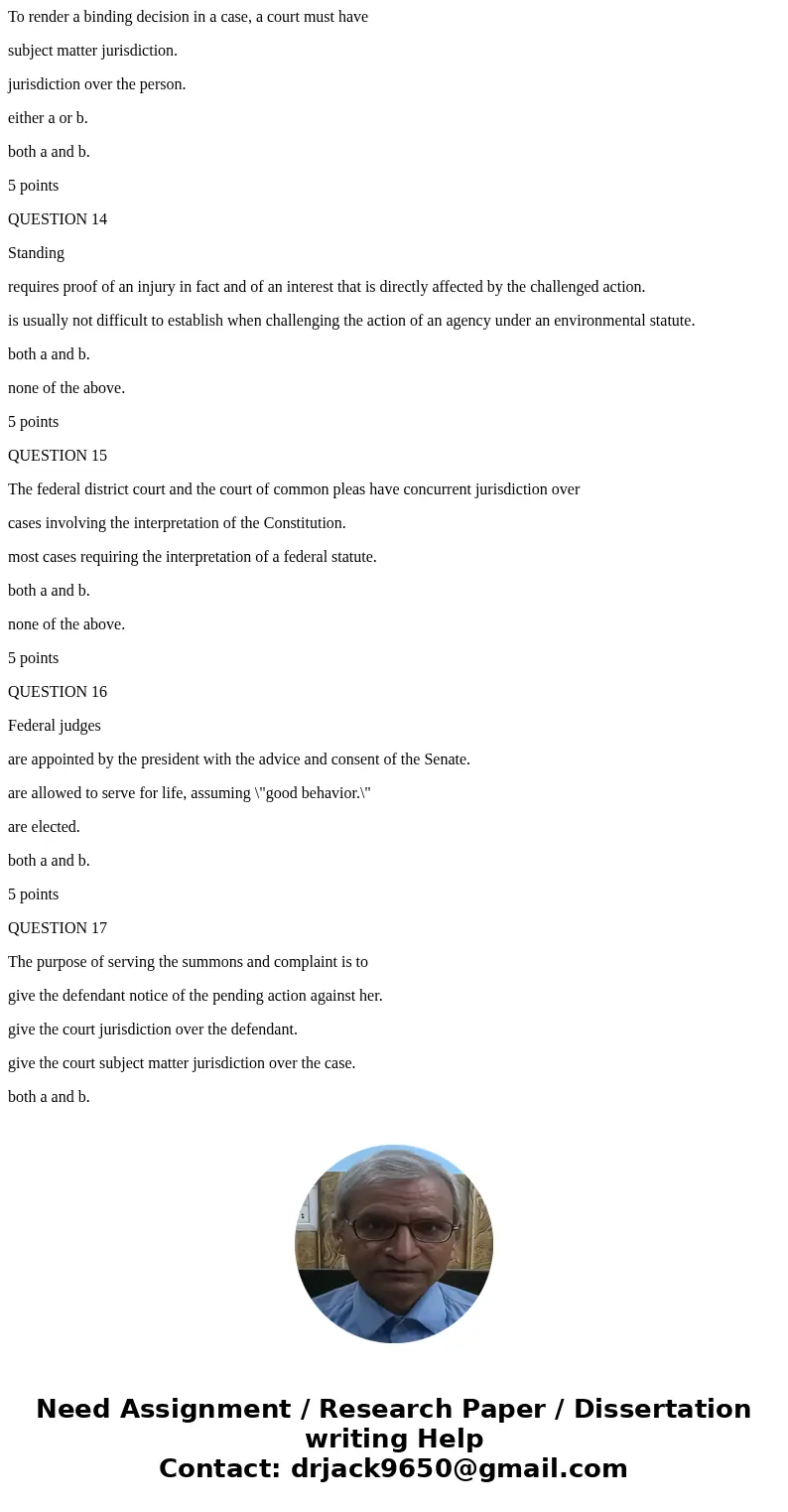
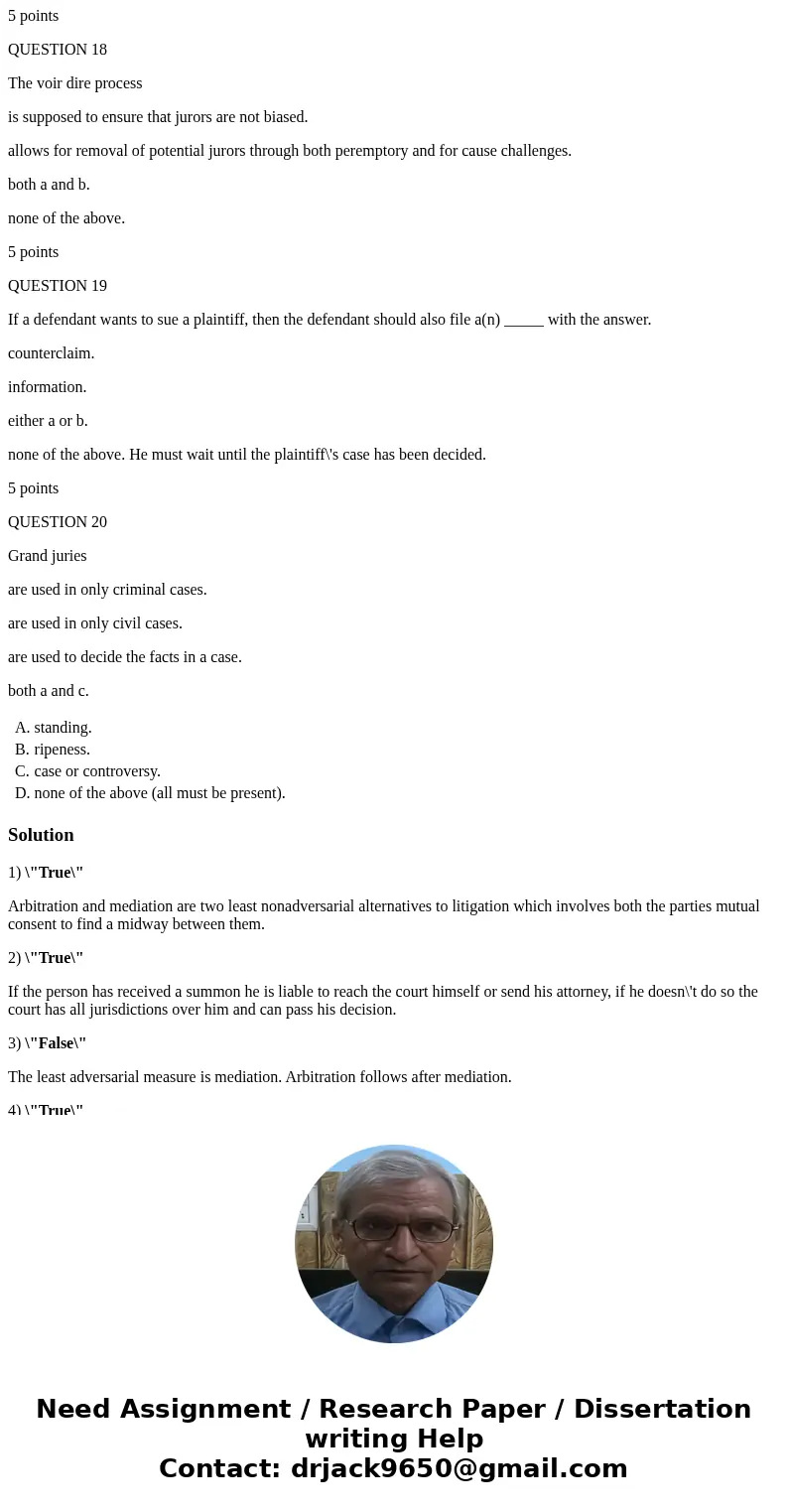
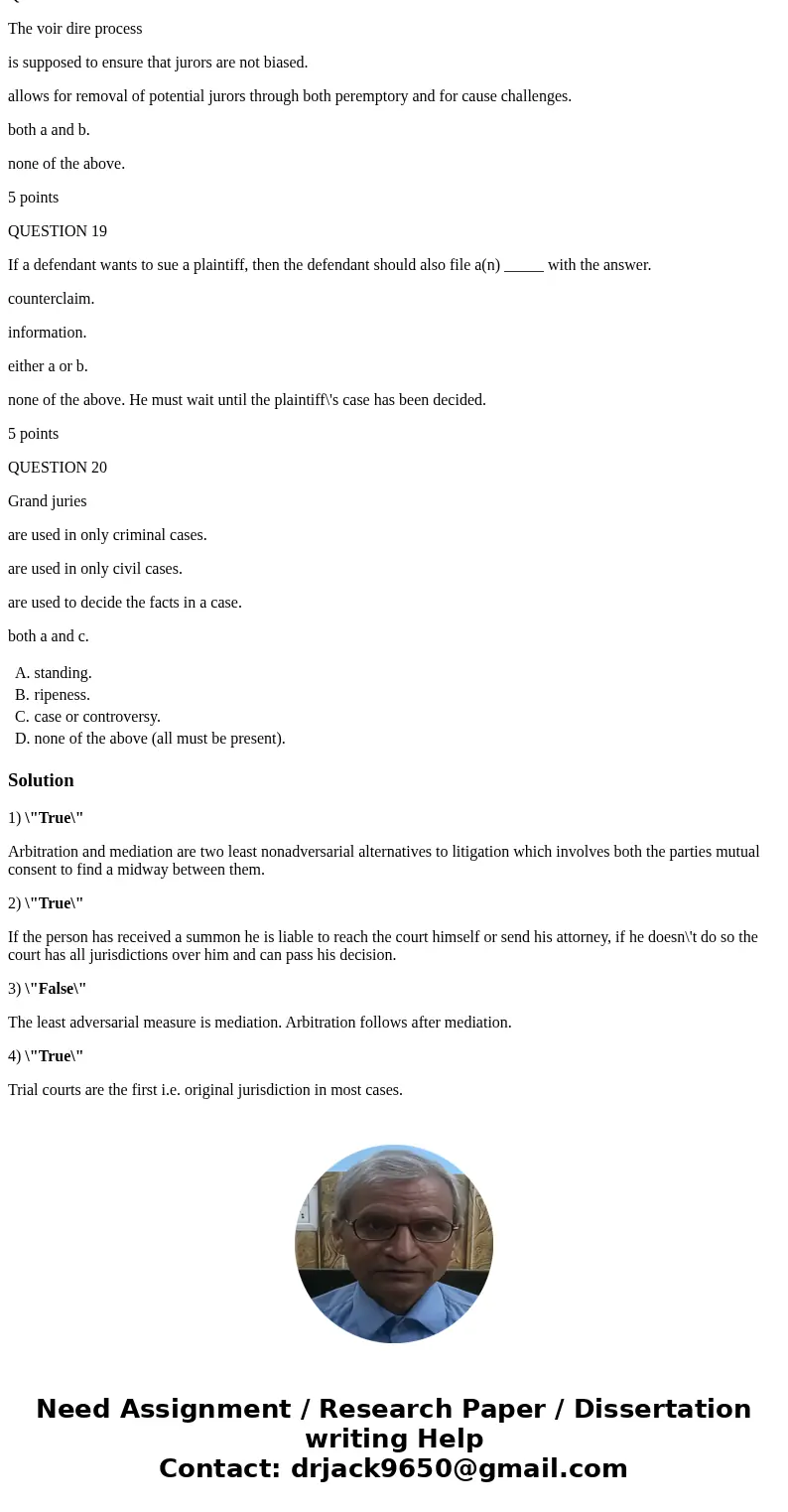
 Homework Sourse
Homework Sourse